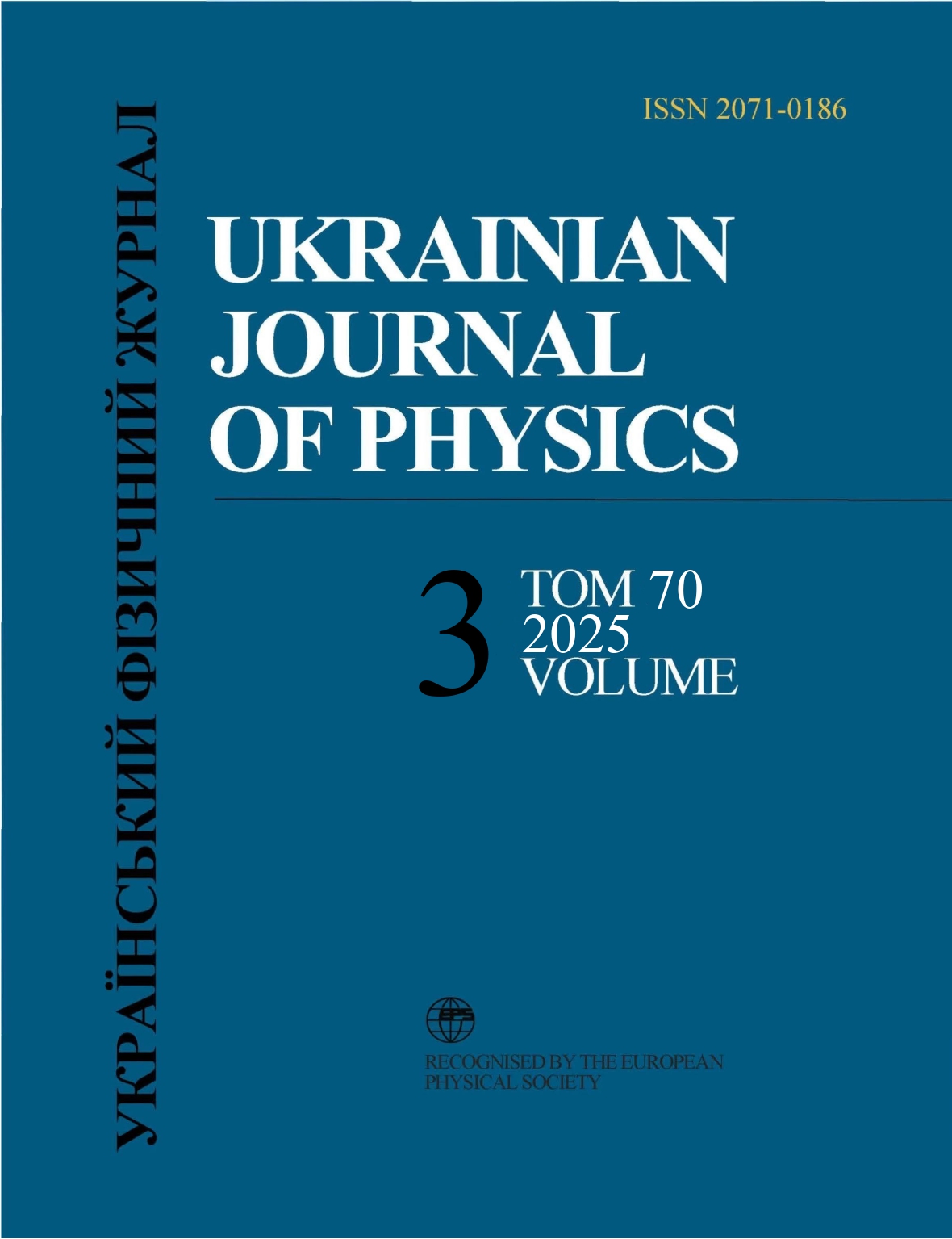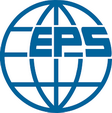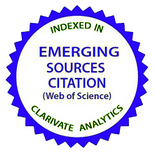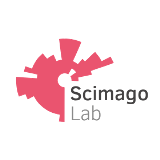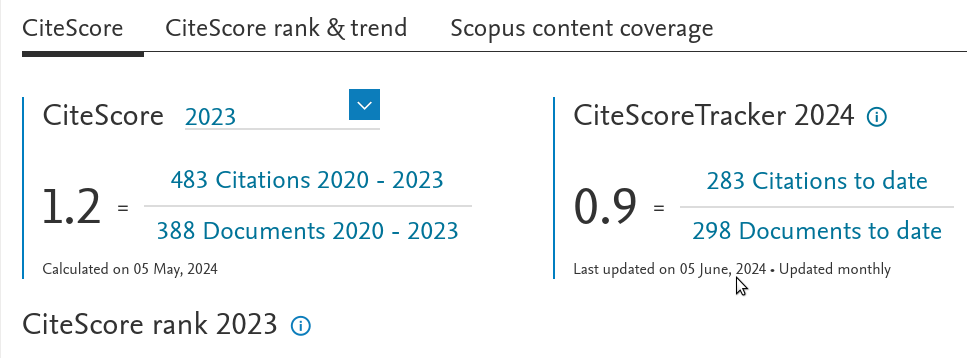Phase Transition and Microgel Formation in Polymer Solutions with Salt Ions
DOI:
https://doi.org/10.15407/ujpe70.3.200Keywords:
phase transition, microgel, hydroxypropyl cellulose, salt ionsAbstract
The features of the phase transition in dilute polymer solutions leading to the formation of a new phase, which is a swollen polymer mesh, have been considered. It is shown that, under certain conditions, only small clusters, microgels, of the new phase are formed and precipitate. A formula for the time dependence of the average microgel radius is derived. Using the method of dynamic light scattering, the time dependences of the cluster size in dilute aqueous solutions of hydroxypropyl cellulose with NaF, NaCl, NaBr, and NaI salt ions are obtained. The experimental results are compared with the derived formula.
References
1. K. Kamide. Cellulose and Cellulose Derivatives: Molecular Characterization and Its Applications (Elsevier Science, 2005).
2. S.M.F. Kabir, P.P. Sikdar, B. Haque, M.A.R. Bhuiyan, A. Ali, M.N. Islam. Cellulose-based hydrogel materials: Chemistry, properties and their prospective applications. Prog. Biomater. 7, 153 (2018).
https://doi.org/10.1007/s40204-018-0095-0
3. M. Karg, A. Pich, T. Hellweg, T. Hoare, L.A. Lyon, J.J. Crassous, D. Suzuki, R.A. Gumerov, S. Schneider, I.I. Potemkin, W. Richtering. Nanogels and microgels: From model colloids to applications, recent developments, and future trends. Langmuir 35, 6231 (2019).
https://doi.org/10.1021/acs.langmuir.8b04304
4. E. Cal'o, V.V. Khutoryanskiy. Biomedical applications of hydrogels: A review of patents and commercial products. Eur. Polym. J. 65, 252 (2014).
https://doi.org/10.1016/j.eurpolymj.2014.11.024
5. T. Okano. Biorelated Polymers and Gels: Controlled Release and Applications in Biomedical Engineering (Polymers, Interfaces and Biomaterials) (Academic Press, 1998).
6. T. Heinze, O.A. El Seoud , A. Koschella. Cellulose Derivatives: Synthesis, Structure, and Properties (Springer Cham, 2018).
https://doi.org/10.1007/978-3-319-73168-1
7. Handbook of Biopolymers. Edited by T. Sabu, A.R. Ajitha, J.C. Cintil, T. Bejoy (Springer Nature Singapore Pte Ltd., 2023).
8. A.S. Narang, S.I.F. Badawy. Handbook of Pharmaceutical Wet Granulation: Theory and Practice in a Quality by Design Paradigm (Academic Press, 2019).
9. M. Gosecki,H. Set¨al¨a, T. Virtanen, A.J. Ryan. A facile method to control the phase behavior of hydroxypropyl cellulose. Carbohydr. Polym. 251, 117015 (2021).
https://doi.org/10.1016/j.carbpol.2020.117015
10. P.-G. Gennes. Scaling Concepts in Polymer Physics (Cornell University Press, 1979).
11. B.R. Saunders, B. Vincent. Microgel particles as model colloids: theory, properties and applications. Adv. Colloid Interface Sci. 80, 1 (1999).
https://doi.org/10.1016/S0001-8686(98)00071-2
12. Chemical Design of Responsive Microgels. Edited by A. Pich, W. Richtering (Springer-Verlag, 2011).
13. A. Fernandez-Nieves, H. Wyss, J. Mattsson, D.A. Weitz. Microgel Suspensions: Fundamentals and Applications (John Wiley and Sons, 2011).
https://doi.org/10.1002/9783527632992
14. Microgels: Synthesis, Properties and Applications (Materials Science and Technologies). Edited by W.-F. Lai (Nova Science Pub Inc, 2018).
15. S.V. Vinogradov. Colloidal microgels in drug delivery applications. Curr. Pharm. Des. 12, 4703 (2006).
https://doi.org/10.2174/138161206779026254
16. J.K. Oh, R. Drumright, D.J. Siegwart, K. Matyjaszewski. The development of microgels/nanogels for drug delivery applications. Prog. Polym. Sci. 33, 448 (2008).
https://doi.org/10.1016/j.progpolymsci.2008.01.002
17. L. Xuan, Y. Hou, L. Liang, J. Wu, K. Fan, L. Lian, J. Qiu, Y. Miao, H. Ravanbakhsh, M. Xu, G. Tang. Microgels for cell delivery in tissue engineering and regenerative medicine. Nano-Micro Lett. 16, 218 (2024).
https://doi.org/10.1007/s40820-024-01421-5
18. K.S. Schmitz, B. Wang, E. Kokufuta. Mechanism of microgel formation via cross-linking of polymers in their dilute solutions: mathematical explanation with computer simulations. Macromolecules 34, 8370 (2001).
https://doi.org/10.1021/ma010956+
19. J.A. Bonham, M.A. Faers, J.S. van Duijneveldt. Nonaqueous microgel particles: synthesis, properties and applications. Soft Matter 10, 9384 (2014).
https://doi.org/10.1039/C4SM01834F
20. V.I. Kovalchuk. Phase separation dynamics in aqueous solutions of thermoresponsive polymers. Cond. Matt. Phys. 24, 43601 (2021).
https://doi.org/10.5488/CMP.24.43601
21. V.I. Kovalchuk, M.M. Lazarenko, O.M. Alekseev. Turbidimetric monitoring of phase separation in aqueous solutions of thermoresponsive polymers. J. Nano- Electron. Phys. 14, 01004 (2022).
https://doi.org/10.21272/jnep.14(1).01004
22. Yu.F. Zabashta, V.I. Kovalchuk, O.S. Svechnikova, L.A. Bulavin. Determination of the surface tension coefficient of polymer gel. Ukr. J. Phys. 67, 365 (2022).
https://doi.org/10.15407/ujpe67.5.365
23. The Sol-Gel Process: Uniformity, Polymers & Applications (Chemical Engineering Methods and Technology: Materials Science and Technologies). Edited by R.E. Morris (Nova Science Pub Inc, 2011).
24. S. Kirkpatrick. Percolation and conduction. Rev. Mod. Phys. 45, 574 (1973).
https://doi.org/10.1103/RevModPhys.45.574
25. M. Tokita. Gelation mechanism and percolation. Food Hydrocoll. 3, 263 (1989).
https://doi.org/10.1016/S0268-005X(89)80038-4
26. D. Stauffer, A. Aharony. Introduction to Percolation Theory (Taylor and Francis, 1992).
27. Yu.F. Zabashta, V.I. Kovalchuk, O.S. Svechnikova, L.Yu. Vergun, L.A. Bulavin. The sol-gel transition in hydrogels as the first-order phase transition. Ukr. J. Phys. 69, 409 (2024).
https://doi.org/10.15407/ujpe69.6.409
28. Yu.F. Zabashta, V.I. Kovalchuk, O.S. Svechnikova, M.M. Lazarenko, O.M. Alekseev, A.V. Brytan, L.Yu. Vergun, L.A. Bulavin. Clusterization in solutions as a process of mesophase formation. J. Phys. Stud. 28, 1602 (2024).
https://doi.org/10.30970/jps.28.1602
29. J. Frenkel. Kinetic Theory of Liquids (Dover Publications, 1955).
30. Hydroxypropyl Cellulose. https://www.alfa.com/en/catalog/043400/.
31. K. Kobayashi, Ch. Huang, T.P. Lodge. Thermoreversible gelation of aqueous methylcellulose solutions. Macromol. 32, 7070 (1999).
https://doi.org/10.1021/ma990242n
32. M. Fettaka, R. Issaadi, N. Moulai-Mostefa, I. Dez, D. Le Cerf, L. Picton. Thermo sensitive behavior of cellulose derivatives in dilute aqueous solutions: From macroscopic to mesoscopic scale. J. Colloid Interf. Sci. 357, 372 (2011).
https://doi.org/10.1016/j.jcis.2011.02.041
33. A.R. Khokhlov, E.E. Dormidontova. Self-organization in ion-containing polymer systems. Phys.-Uspekhi 40, 109 (1997).
https://doi.org/10.1070/PU1997v040n02ABEH000191
34. L.A. Bulavin, N.I. Lebovka, Yu.A. Kyslyi, S.V. Khrapatyi, A.I. Goncharuk, I.A. Mel'nyk, V.I. Koval'chuk. Microstructural, rheological, and conductometric studies of multiwalled carbon nanotube suspensions in glycerol. Ukr. J. Phys. 56, 217 (2011).
35. M. Stoian, T. Maurer, S. Lamri, I. Fechete. Techniques of preparation of thin films: catalytic combustion. Catalysts 11, 1530 (2021).
https://doi.org/10.3390/catal11121530
36. C. Trinh, Y. Wei, A. Yadav, M. Muske, N. Grimm, Z. Li, L. Thum, D. Wallacher, R. Schl¨ogl, K. Skorupska, R. Schlatmann, D. Amkreutz. Reactor design for thin film catalyst activity characterization. Chem. Eng. J. 477, 146926 (2023).
Downloads
Published
How to Cite
Issue
Section
License
Copyright Agreement
License to Publish the Paper
Kyiv, Ukraine
The corresponding author and the co-authors (hereon referred to as the Author(s)) of the paper being submitted to the Ukrainian Journal of Physics (hereon referred to as the Paper) from one side and the Bogolyubov Institute for Theoretical Physics, National Academy of Sciences of Ukraine, represented by its Director (hereon referred to as the Publisher) from the other side have come to the following Agreement:
1. Subject of the Agreement.
The Author(s) grant(s) the Publisher the free non-exclusive right to use the Paper (of scientific, technical, or any other content) according to the terms and conditions defined by this Agreement.
2. The ways of using the Paper.
2.1. The Author(s) grant(s) the Publisher the right to use the Paper as follows.
2.1.1. To publish the Paper in the Ukrainian Journal of Physics (hereon referred to as the Journal) in original language and translated into English (the copy of the Paper approved by the Author(s) and the Publisher and accepted for publication is a constitutive part of this License Agreement).
2.1.2. To edit, adapt, and correct the Paper by approval of the Author(s).
2.1.3. To translate the Paper in the case when the Paper is written in a language different from that adopted in the Journal.
2.2. If the Author(s) has(ve) an intent to use the Paper in any other way, e.g., to publish the translated version of the Paper (except for the case defined by Section 2.1.3 of this Agreement), to post the full Paper or any its part on the web, to publish the Paper in any other editions, to include the Paper or any its part in other collections, anthologies, encyclopaedias, etc., the Author(s) should get a written permission from the Publisher.
3. License territory.
The Author(s) grant(s) the Publisher the right to use the Paper as regulated by sections 2.1.1–2.1.3 of this Agreement on the territory of Ukraine and to distribute the Paper as indispensable part of the Journal on the territory of Ukraine and other countries by means of subscription, sales, and free transfer to a third party.
4. Duration.
4.1. This Agreement is valid starting from the date of signature and acts for the entire period of the existence of the Journal.
5. Loyalty.
5.1. The Author(s) warrant(s) the Publisher that:
– he/she is the true author (co-author) of the Paper;
– copyright on the Paper was not transferred to any other party;
– the Paper has never been published before and will not be published in any other media before it is published by the Publisher (see also section 2.2);
– the Author(s) do(es) not violate any intellectual property right of other parties. If the Paper includes some materials of other parties, except for citations whose length is regulated by the scientific, informational, or critical character of the Paper, the use of such materials is in compliance with the regulations of the international law and the law of Ukraine.
6. Requisites and signatures of the Parties.
Publisher: Bogolyubov Institute for Theoretical Physics, National Academy of Sciences of Ukraine.
Address: Ukraine, Kyiv, Metrolohichna Str. 14-b.
Author: Electronic signature on behalf and with endorsement of all co-authors.

